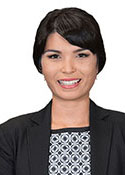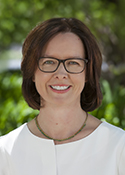Canberra
Margin: Labor 7.4%
Region: Southern Canberra, Australian Capital Territory
In a nutshell: The Liberals once won Canberra at a by-election during the terminal phase of the Keating government, but they wouldn’t be holding their breath waiting for it to happen again.
Candidates in ballot paper order

|
GAI BRODTMANN PATRICIA CAHILL CHRISTOPHER D’ARCY BUCKNELL JESSICA ADELAN-LANGFORD |
The electorate of Canberra covers the southern half of the national capital together with the bulk of the Australian Capital Territory’s undeveloped remainder, with northern Canberra accommodated by a seat now known as Fenner. A redistribution of the territory’s two electorates has pushed the boundary from Lake Burley Griffin, so that Canberra now encompasses the city centre and the suburbs of Reid and Campbell. This involves a transfer of around 10,000 voters from the old seat of Fraser, which is renamed Fenner, and boosts the Labor margin from 57.0% to 57.4%.
The Australian Capital Territory had no parliamentary representation until 1949, when it was granted a member who had voting rights in relation to local matters only. Full voting rights were obtained in 1968, and a second seat was gained with the division of the territory into Canberra and Fraser in 1974. A third electorate was created for the 1996 election, with the short-lived electorate of Namadji covering the south, Canberra the centre and Fraser the north. However, the previous order was reinstated when the seat entitlement slipped back to two at the 1998 election, largely due to Howard government cutbacks to the federal public service. The territory’s present population amounts to over 2.4 quotas in the representation entitlement determination, leaving Canberra and Fraser with the highest enrolments in the country, of around 140,000 voters compared with a national average of around 103,000.
Labor’s dominance of the territory has been disturbed only with independent Lewis Nott’s win in Australian Capital Territory on its creation in 1949, successive Liberal victories in Canberra in 1975 and 1977, and Labor’s defeat in a by-election for Canberra in March 1995. Whitlam government Attorney-General Kep Endery held Australian Capital Territory for Labor from a 1970 by-election, and carried over to Canberra in 1974. Liberal candidate John Haslem unseated Enderby with a 10.4% swing in the December 1975 landslide and held on narrowly in 1977, before the seat reverted to Labor type with Ros Kelly’s victory in 1980. Kelly served in the Hawke-Keating ministries from 1987 until 1994, when she fell victim to the still notorious “sports rorts” affair. Kelly’s indulgent departure from parliament a year later was followed by a bruising by-election defeat in which Liberal candidate Brendan Smyth gained the seat with a 16.2% swing. Brendan Smyth unsuccessfully contested the new seat of Namadji in 1996, and Canberra was easily won for Labor by Bob McMullan, who had served the territory as a Senator since 1988.
Bob McMullan moved to Fraser when the old boundaries were reasserted in 1998, the Labor margin in redrawn Canberra being 5.1% lower than the one he had secured in 1996. Canberra went to Annette Ellis, who had entered parliament as the member for Namadgi in 1996, while Fraser MP Steve Darvagel agreed to go quietly after a brief parliamentary career that began when he retained Fraser for Labor at a by-election in February 1997. Ellis added 7.2% to an existing 2.3% margin in 1998, and Labor’s margins have since ranged from a low of 7.0% in 2013 to a high of 11.8% in 2007. Annette Ellis and Bob McMullan announced they would not seek another term six months out from the August 2010 election, prompting vigorous preselection contests involving large fields of candidates in both seats.
The eventual winner in Canberra was Gai Brodtmann, a former Department of Foreign Affairs and Trade public servant who had established a local communications consultancy with her husband, senior ABC reporter Chris Uhlmann. It was initially reported that the front-runner was Michael Cooney, a political staffer who had worked under federal leaders Mark Latham and Kim Beazley, but he withdrew amid suggestions Kevin Rudd was ready to call upon national executive intervention to block him. Together with Andrew Leigh’s win in Fraser, Brodtmann’s preselection was seen as a rebuff to local factional powerbrokers who had pursued a deal in which the Right and Left were to back each other’s respective candidates in Canberra and Fraser, the beneficiary in Canberra being Mary Wood, an adviser to Housing Minister Tanya Plibersek. However, Brodtmann was able to build a cross-factional support base of sufficient breadth to prevail over Wood by 123 votes to 109. Brodtmann won promotion to Shadow Parliamentary Secretary for Defence after the 2013 election defeat.
Brodtmann’s opponents for the coming election include Liberal candidate Jessica Adelan-Langford, a local lawyer, and urban planner Patricia Cahill for the Greens.
Analysis by William Bowe. Read William’s blog, The Poll Bludger.


